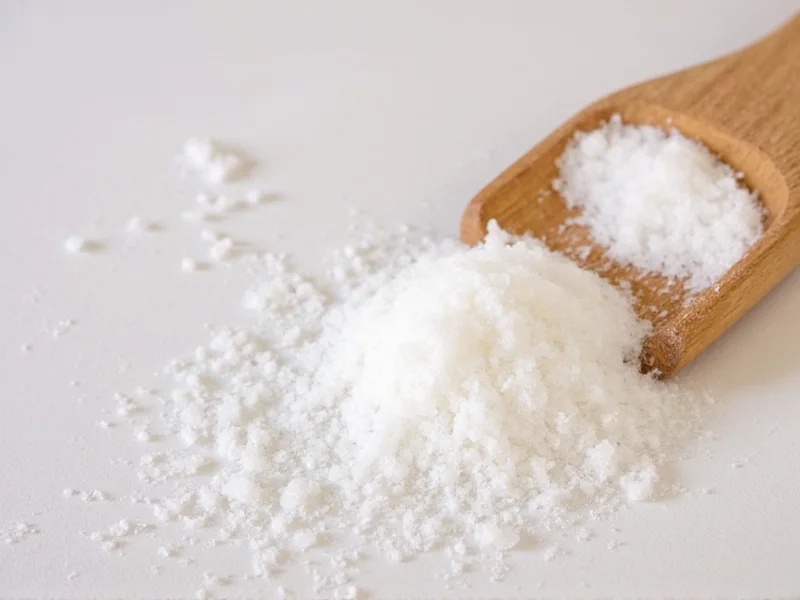Demarara sugar is a minimally processed, light brown cane sugar characterized by its large golden-brown crystals and subtle molasses flavor. Originating from Guyana, it's produced by evaporating water from sugar cane juice, retaining approximately 1-2% natural molasses content while undergoing less refining than white sugar. This specialty sugar contains trace minerals like potassium and calcium, though nutritionally similar to other sugars.
When you're searching for what is demarara sugar, you're likely looking for more than just a basic definition. This distinctive sugar has become increasingly popular among home bakers and professional chefs seeking nuanced sweetness with subtle complexity. Understanding its properties helps you make informed decisions in your culinary creations.
Origin and Production Process
Demarara sugar takes its name from Demerara, a historical region in Guyana where it was originally produced. The sugar cane undergoes a single crystallization process, preserving more of the natural molasses than fully refined white sugar. Unlike brown sugars that often have molasses added back after refining, authentic demarara retains its natural molasses content throughout production.
The manufacturing process begins with crushing sugar cane to extract juice, which is then clarified and evaporated to form crystals. These crystals are centrifuged to remove excess liquid while maintaining that characteristic golden color and mild molasses flavor. The result is a sugar with larger, more coarse crystals than standard table sugar.
Physical and Flavor Characteristics
Demarara sugar features distinctive golden-brown crystals that are larger and more coarse than regular white sugar but finer than turbinado sugar. Its moisture content sits between white and brown sugars, giving it unique properties in baking applications. The flavor profile includes a delicate caramel note with subtle molasses undertones—noticeably less intense than dark brown sugar but more complex than white sugar.
| Sugar Type | Crystal Size | Molasses Content | Flavor Profile |
|---|---|---|---|
| Demarara | Medium-large, coarse | 1-2% natural | Subtle caramel, mild molasses |
| White Sugar | Small, fine | 0% | Neutral sweetness |
| Light Brown | Medium | 3.5% added | Moderate molasses |
| Turbinado | Large, coarse | 2-3% natural | Bolder molasses |
Difference Between Demarara Sugar and Brown Sugar
Many home bakers wonder about the difference between demarara sugar and brown sugar. While both appear brown, they're fundamentally different. Commercial brown sugars (light and dark) are typically made by adding molasses back to refined white sugar. Demarara, however, retains its natural molasses through minimal processing.
This distinction affects both texture and flavor. Demarara has larger crystals that don't dissolve as readily as brown sugar's finer crystals, making it better suited for toppings than for recipes requiring complete dissolution. Its molasses flavor is also more delicate than dark brown sugar but more pronounced than light brown sugar.
Culinary Applications
Understanding what is demarara sugar used for helps maximize its potential in your kitchen. Its coarse texture and mild flavor make it ideal for:
- As a finishing sugar on baked goods like muffins, scones, and cookies
- Adding crunch to crumbles and crumb toppings
- Sweetening beverages like coffee and tea where crystals remain visible
- Creating caramel sauces with nuanced flavor
- As a component in spice rubs for meats
When substituting demarara in recipes calling for white sugar, use a 1:1 ratio but expect slight color and flavor changes. For recipes requiring fine sugar (like meringues), process demarara in a food processor to reduce crystal size.
Nutritional Profile: Is Demarara Sugar Healthier?
Many search for is demarara sugar healthier than white sugar, hoping for nutritional advantages. While demarara contains trace amounts of minerals like potassium, calcium, and iron from the retained molasses, these amounts are nutritionally insignificant in typical serving sizes.
From a caloric and carbohydrate perspective, demarara sugar contains approximately 15 calories and 4 grams of carbohydrates per teaspoon—virtually identical to white sugar. The minor mineral content doesn't make it a "health food," though some prefer it for its less processed nature and more complex flavor that might lead to using slightly less.
Storage and Shelf Life
Proper storage maintains demarara sugar's desirable texture. Keep it in an airtight container away from moisture, which can cause clumping. Unlike brown sugars that harden when dried out, demarara's larger crystals resist hardening but can still absorb odors from surrounding foods.
If your demarara sugar does harden, place a slice of bread or damp paper towel in the container overnight to restore moisture. The shelf life is essentially indefinite when stored properly, though flavor may diminish after 1-2 years.
Where to Find Demarara Sugar
Searching for where to buy demarara sugar has become easier as specialty sugars gain popularity. You'll typically find it in:
- Well-stocked grocery stores in the baking aisle
- Health food stores and organic markets
- Online retailers specializing in baking ingredients
- International food sections (often labeled as "raw cane sugar")
Look for brands like Tate & Lyle, which popularized demarara sugar in many markets. When shopping, check that the ingredient list shows only "cane sugar" without added molasses or other ingredients.
Substitution Guidelines
When you need to substitute demarara sugar, consider these options based on your recipe's requirements:
- Turbinado sugar: Nearly identical with slightly larger crystals and marginally more molasses
- Light brown sugar: Softer texture with more pronounced molasses flavor (use 1:1 ratio)
- White sugar + molasses: For every cup of demarara, use 1 cup white sugar plus 1-2 teaspoons molasses
- Coconut sugar: Similar color but distinct flavor profile (use 1:1 ratio)
Remember that substitutions will affect both texture and flavor. For applications where crystal structure matters (like toppings), turbinado makes the closest substitute. For recipes requiring dissolved sugar, brown sugar works better.











 浙公网安备
33010002000092号
浙公网安备
33010002000092号 浙B2-20120091-4
浙B2-20120091-4